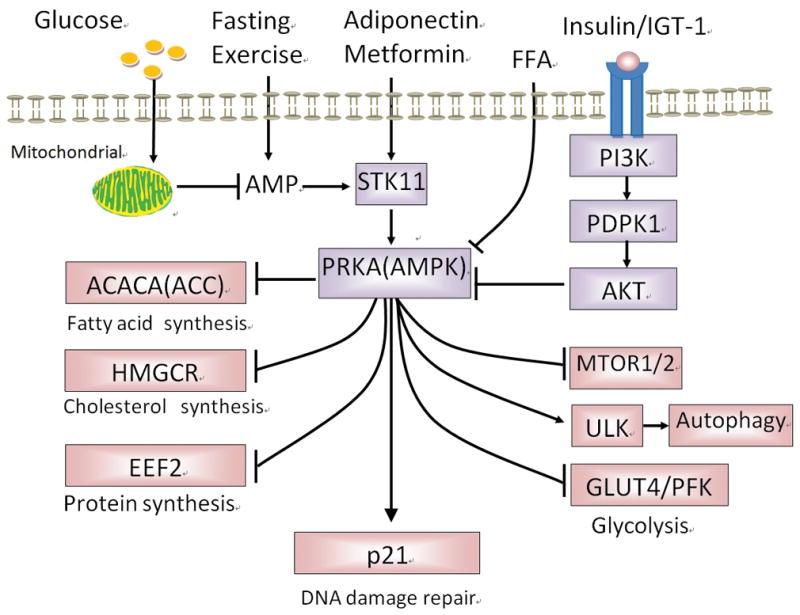Figure 1.

Roles of AMPK in cancer in type 2 diabetes. Under nutrition deficiency state, such as fasting, exercise, glucose deprivation, increased AMP activates AMPK which then switches off the synthesis of protein, fatty acid and cholesterol, but switches on the glycolysis and autophagy in order for the cell to survive in energy insufficient. However, in type 2 diabetes, AMPK is inhibited by high levels of plasma glucose, insulin and IGF1, which may promote anabolism to meet the increasing demanding of cancer cell growth. CaMMKK:calmodulin-dependent protein kinase 1 alpha; AICAR: 5-amino-1-β-D-ribofuranosyl-imidazole-4-carboxamide; GLUT4: Glucose transporter 4; PFK-2: phosphofructokinase-2; eEF-2: eukaryotic translation elongation factor 2; STK11 (LKB1: Liver kinase B1); AMPK: AMP-activated protein kinase; ACC: acetyl-CoA carboxylase; IGF1: insulin growth factor-1; PI3K: phosphatidylinositol 3-kinase; PDPK1: phosphoinositide-dependent kinase-1; AKT: proteinase kinase B; mTOR: mechanistic (mammalian) target of rapamycin; ULK: Unc-51-Like Kinases; HMG-CoA:3-hydroxy-3-methylglutaryl-coenzyme A
